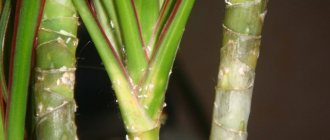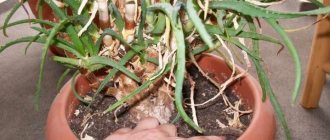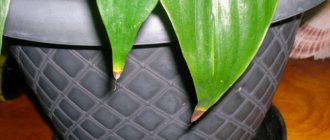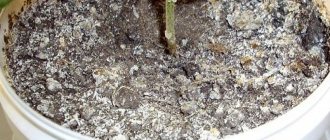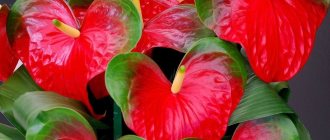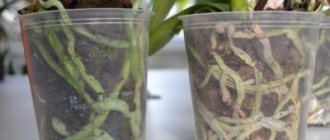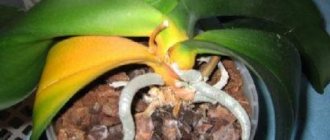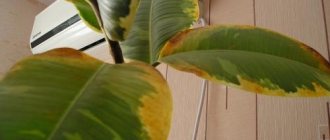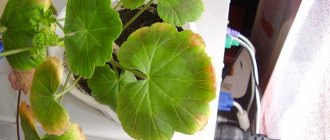Chinese hibiscus (Hibiscus rosa-sinensis) is a heat-loving species of the Hibiscus genus from the Malvaceae family. In Russia and neighboring countries, this is a popular indoor plant, better known as the Chinese rose. It is a large evergreen shrub with quickly woody branches, shiny dark green plates, and large flowers that look like bright gramophones. Care is simple; many owners consider the plant to be problem-free and pay little attention to it. But when the leaves of a Chinese rose turn yellow and fall off, you will have to look for the source of trouble.
What are hibiscus diseases?
Definition
Hibiscus disease is various deviations in its growth and development, as well as a violation of the decorative appearance. Absolutely different parts of the plant can be affected, depending on the type of disease and the cause of its development.
Types of ailments
There are several diseases that affect different parts of the flower:
Rust. With this disease, the plant's shoots become bent and thickened. With the onset of spring, orange dust forms on the stems at the blossoming buds and at the root collar.- Powdery mildew . This is a fungal disease in which a powdery coating forms on young leaves, shoots and buds. In addition, the affected parts of the flower thicken and become distorted.
- , dark brown spots form on the leaves , which take on different sizes. The leaf blade turns brown and the foliage falls off.
- Bacterial cancer . Growths of different sizes form on the root collar and roots of the Chinese rose. At first they are barely noticeable, but then their sizes reach several centimeters in diameter. The growths are distinguished by an uneven tuberculate surface. They are made of soft fabric. At first their color is white, and then brown.
Differences from pest damage
The main difference is that parasites on leaves or stems leave certain traces of their vital activity, for example, mucus, sticky coating. But diseases, as a rule, manifest themselves in the form of spotting on the leaves and rot of the stems. In addition, it is enough just to carefully examine the flower and understand whether there are any pests on it.
Hibiscus - Chinese rose
The first information about the plant dates back to Ancient Greece. By the way, the Mediterranean climate is a favorable environment for Chinese roses! Its habitat covers countries with tropical and subtropical climates. For example, on the streets of Vietnam or Thailand, a rose feels great! The flower belongs to the mallow family, and its genus includes not only shrubs, but trees and even herbs; in total there are up to 500 different species.
In the places where it originally grew, its flowers were woven into the hair of local aborigines, perhaps that’s why the plant was nicknamed “the flower of beautiful women”! Initially, Chinese hibiscus was a tree up to 5 meters high, but for indoor growing, breeders developed smaller varieties. And, although the rose allows you to admire its flowers for only one day, the flowering period can last for months! And double-shaped flowers will delight you for up to three days.
Do you know? In Malaysia, the flower received the title of national. Its five-petalled variety is a symbol of the five commandments of Islam!
By the way, the species is not limited to just the Chinese representative. Native to Asia Minor, Syrian hibiscus is a shrub suitable for outdoor cultivation. However, only for the southern strip of Russia. After all, in a short summer, it simply does not have time to bloom! Its flowers are often confused with mallow.
There is another species that is sometimes called a weed, the hibiscus trifoliata. A flower up to 80 cm high has become a favorite of the African continent, and grows on its own in pastures and wastelands. Perhaps that is why he received such an offensive nickname!
city troychaty
Syrian
Dissected hibiscus - this beautiful species has received the name “princess earrings”. It is shaped like a bell with curved petals that resemble the wings of an exotic bird! It comes from Brazil, grows in coastal areas or tropical forests, and is suitable for home gardening.
g. dissected petal
Do you know? The plant is edible! The flowers are used in tea, the leaves are added to salads, the seeds are used for confectionery purposes, and the ripe fruits are highly valued for making jams, compotes and even soups.
Sudanese rose
By the way, the famous hibiscus tea has nothing to do with the indoor rose plant we are used to! The raw material for it is the calyxes of Sudanese hibiscus flowers, which increase in size after flowering. Unlike its relatives, this species is distributed mainly in Arab countries, especially in Egypt and Sudan due to climatic preferences.
✿
Why does the plant suffer from diseases?
Drying . The main reason for the drying out of the Chinese rose is the lack of modern watering. It is also the plant’s reaction to a change of location. The leaves will dry up on a frozen flower. You just need to give him time to come to his senses and warm up.- Withering . The main reason for the wilting of the tips of the leaves is a deficiency of phosphorus, nitrogen, and lack of complementary feeding of hibiscus. An increased temperature in the room and a decrease in humidity to low levels can affect the general wilting of the leaves and the entire flower.
- Curling of leaves . If a Chinese rose begins to curl its leaves into a tube, then this is a symptom of pest infestation. The most dangerous pests for hibiscus are aphids, whiteflies and spider mites.
- Falling off (you can find out why Chinese rose buds fall off and leaves fall off and what to do about it here). Falling leaves is a reaction to low humidity, lack of spraying, sudden changes in lighting, drafts and other types of stress for the rose.
- Yellowing of the crown . Yellowing of the leaf blade is caused by several reasons:
- pests;
- root diseases;
- leaf chlorosis;
- poor air humidification in the room.
Read about why Chinese rose leaves and buds turn yellow and fall off and what to do to treat it in our material.
- Lack of flowering . There are many reasons that affect the lack of flowering. The most important thing remains an excess of nitrogen fertilizing, especially when the plant looks healthy and is abundantly covered with leaves. The following reasons may also affect the lack of flowering:
- bad light;
- insufficient hydration;
- During wintering, the Chinese rose is in a room that is too warm.
Video
Sources
- https://cvetokmir.ru/pochemu-u-gibiskusa-opadajut-butony.html
- https://flower96.ru/sadovye/u-gibiskusa-opadayut-butony-prichina.html
- https://viridarus.ru/drugoe/u-gibiskusa-opadayut-neraskryvshiesya-butony-prichiny-chto-delat-s-rasteniem.html
- https://vdnh-nv.ru/sad/u-gibiskusa-opadayut-butony-prichina.html
- https://alt-zem.org/tsvety/pochemu-gibiskus-sbrasyvaet-butony.html
- https://podokonnik.temadnya.com/1318872962196572567/pochemu-u-komnatnogo-gibiskusa-opadayut-butony/
- https://KomnatnieCveti.ru/komnatnye/u-gibiskusa-opadayut-butony.html
- https://tripchik.ru/v-komnate/gibiskus-opadayut-butony.html
- https://sadovnic.su/yagody/pochemu-gibiskus-sbrasyvaet-butony.html
- https://vashcvetok.ru/vyrashhivanie/ne-tsvetet-gibiskus
- https://nikodimov.ru/cvety-doma/pochemu-gibiskus-sbrasyvaet-butony.html
- https://flowers-republic.ru/komnatnye-tsvety/pochemu-gibiskus-sbrasyvaet-butony.html
- https://mvazonchik.ru/pochemu-u-kitajskoj-rozy-opadajut-butony.html
- https://kaktys.club/bolezni/pochemu-gibiskus-sbrasyvaet-butony
- https://vrn-agroservis.ru/gibiskus/pochemu-gibiskus-sbrasyvaet-svoi-neraspustivshiesya-butony.html
Prevention
To prevent the development of recurrent disease, the following preventive measures must be taken:
- Temperatures should not go beyond the normal range - 18-22 degrees Celsius. Drying and waterlogging are unacceptable.
- Timely treatment against pests. They lead to leaf deformation and the development of diseases. For processing use Peretrum, Actofit.
- It is best to use mineral complex fertilizers to regularly apply nutritional compounds.
- The air in the room should be moderately humid, but not dry.
- Temperature . Chinese rose is a heat-loving plant. In spring and summer, temperatures will be 25 degrees Celsius, and in winter – 15-20 degrees. If the winter temperature is below 10 degrees, the leaves will fall off. In summer, place the flower on the balcony, protecting it from rain and wind.
- Lighting . Hibiscus is a light-loving crop. Diffused light is important for him. If direct sunlight hits the flower in summer, this can lead to the development of a burn. Grow the plant on east or west windows.
- Watering . In spring and summer, Chinese roses need abundant watering. Use settled water at room temperature. Avoid overmoistening. In winter, watering is moderate. Before the next irrigation, wait until the soil is completely dry. Be sure to provide good drainage.
- Air humidity . In summer, hibiscus needs high humidity. It is useful for him to carry out frequent spraying. Just don’t let water get on the flowers, otherwise they may fall off. In winter, less moisture is required. But if there was central heating, then spraying should be carried out every other day.
- Feeding . From spring until autumn, add complex nutritional compositions intended for flowering indoor plants. Do this once every 2 weeks. Starting from August, reduce nitrogen-containing fertilizing.
- Trimming . Heavily prune your Chinese rose every spring. This will allow the bush to acquire a compact shape with a large number of buds. If the plant begins to stretch too much, then prune it during the growth period. Thanks to pruning, the flower can take the form of a bush or tree.
Read also: How to design an entrance to a house
Caring for a houseplant at home
- Provide the flower with diffused light.
- Carry out periodic spraying.
- Keep the plant warm and avoid sudden temperature changes.
- Conduct transplantation on time.
- Provide abundant regular watering in spring and summer and monitor its moderation in winter.
The exotic, handsome hibiscus cannot be called very whimsical in its content . Following simple rules of care is useful not only for the plant, but also for its owner, as it helps to avoid the hassle of urgently eliminating defects and diseases.
Causes
The Chinese rose is undemanding and will tolerate shortcomings when caring for it, unless inattention to the plant develops into a permanent phenomenon. More often, for objective reasons, rose leaves turn yellow and fall off. It is important to understand what is happening and take action to eliminate weaknesses in care in order to prevent the flower from dying.
Let's look at the most common causes of yellowing and falling leaves.
Natural
In preparation for the dormant period, the leaves of the Chinese rose turn yellow and fall off. The flower sheds some of its leaves in winter; it needs rest after flowering and to recuperate for the future. The rose gets rid of yellowed old ones when many young leaves appear on the bush.
Old plants that are getting ready to die also shed their leaves. These are natural causes of leaf wilting.
Stress
Hibiscus does not like to be moved from place to place. Simply turning or moving to another room causes severe stress to the plant. Before adapting to new conditions, the flower sheds its yellowed leaves. A difficult test for a rose is transplanting it into a new pot. She gets sick for a long time because the roots are often damaged during transshipment. While new roots are restored and grow, the flower sheds its foliage.
Effect of moisture
Dried soil in a pot with a Chinese rose leads to the death of the roots and massive leaf loss. The cause is a cramped pot or insufficient moisture. The required amount of nutrition is not delivered to the leaves, they turn yellow and fall off. Find out the exact cause by the dried soil in the center of the flower pot. To do this, water the rose in the morning, and closer to night they look to see if the soil in the center of the container is dry. Dryness indicates that the flower is cramped in this container. In summer, the Chinese rose feels a lack of moisture even with constant watering in the morning and evening.
Excess moisture can adversely affect the flower. The hibiscus is withering. The soil in the pot becomes compacted and air does not enter there. Stagnant water appears, the soil becomes swampy, which leads to the emergence of bacteria and fungi. This is due to the large pot. The roots of the plant rot and die in this environment. Diseased roots do not supply enough nutrition for the normal existence of hibiscus. The leaves turn yellow and fall off.
Temperature
As a native of the tropics, the Chinese rose does not tolerate cold and drafts; it is kept away from air conditioners. When ventilating, the rose is closed from the air flow. The indoor flower is kept in an acceptable temperature environment of +18.30°C. In winter, when the rose is in a state of hibernation, the room temperature is maintained at +13.15 ° C, provided that there is additional lighting. In spring and until early autumn, the room is maintained at +17.23°C. Cooling to +10°C provokes yellowing and falling of leaves.
Illumination
Another reason why Chinese rose leaves turn yellow and fall off is improper lighting. As usual, they turn yellow on the side of the plant that is in the shade. However, hibiscus should not be exposed to direct sunlight. Excess sun will cause burns, which will cause the leaves to turn yellow and they will fall off.
Hibiscus still reacts to lack of light. Diffused lighting has a beneficial effect on the flower. And in winter, the lack of natural light is supplemented with the light of fluorescent lamps.
Chlorosis
Evidence of chlorosis disease in Chinese hibiscus is yellowing of the leaf plates, while the veins remain green. In addition, spots appear on the leaves. The reason for these phenomena is the increased acidity of the soil, which is provoked by tap water. Chlorosis does not affect the entire plant at once. More often, the young roots and tops of the rose become sick, and the yellow leaves fall off.
Mineral deficiency
It is important to notice in which part of the Chinese hibiscus the leaves turn yellow. A lack of nutrients is indicated if the upper leaves of a flower turn yellow. Leaves turn yellow if there is insufficient zinc, manganese, magnesium and iron. The increased content of chlorine and calcium in the water causes the lower leaves to fall off, and new ones to grow yellow. If there is not enough nitrogen or iron, the phenomenon repeats.
Fertilizers must be applied carefully, the main thing is not to exceed the norm. If there is not enough nitrogen, the leaf veins turn yellow, if there is potassium, the entire leaf turns yellow. The increased content of magnesium and potassium does not harm the development of hibiscus.
The content of nitrogen and phosphorus exceeding the norm leads to massive yellowing of the leaves.
Spider mite
The pest becomes active on the plant when the air in the room is dry. In addition to yellowing of the leaves, cobwebs and a whitish coating form on the flower. Traces of mites can be seen on the back of the leaves in the form of small dots. In order not to provoke the activation of mites, the air near the plant is moistened and vessels with water are placed nearby.
Read also: Grill area at the dacha photo
Diseases and pests
When hibiscus is infected with viruses, the leaves not only turn yellow, but spots appear on them. To prevent the Chinese rose from dying, it is necessary to begin treatment immediately. If there are no errors in care and the presence of yellowed leaves, the fact of plant disease is excluded.
Chlorosis
This virus is the most common disease. With it, the leaf of the plant turns yellow, and the veins retain their natural color. Chlorosis is a consequence of soil with impaired acidity levels. The situation can be corrected by using a complex of mineral fertilizers and replanting the plant in fresh soil. Tip: to avoid disease, it is not recommended to water hibiscus with hard water. It contributes to the oxidation of the earth.
Spider mite
Yellow sheets may indicate the presence of spider mites; they can only be seen when using magnifying devices. Dry air is the basis why spider mites appear. To prevent its occurrence, use humidifiers and prevent it using insecticides a couple of times a year. To save a diseased hibiscus, it is recommended to wash the leaves with a soapy solution. Regular spraying with water reduces the likelihood of spider mites.
What to do?
In order for the hibiscus leaves not to turn yellow and fall off, and for the rose to live comfortably at home, it needs to be properly cared for all year round, monitor the health of the flower and protect it from pests.
Replacing a flower pot
A small pot does not allow the rose to grow and develop properly, so it is replaced with a large one, which is 2-3 cm wider in diameter than the previous one. The flower is replanted using the transshipment method so as not to harm the roots. The hibiscus is placed in a new pot with moist soil and drainage, watered only on the third day.
The formation of excess water in the pan indicates that the pot for the plant is too large. It is replaced with a smaller one so that the roots do not rot and the plant dies. Before transplanting a flower, inspect its root system, clear it of soil, remove rotten fragments, treat the roots with a fungicide solution and sprinkle the sections with Kornevin powder or crushed activated carbon. After transplantation, the flower is sprayed with Zircon or Epin.
Proper watering
For lush flowering of the Chinese rose and the development of beautiful and healthy foliage in the summer, the flower is watered abundantly. The main thing is not to overdo it; water the plant again after the top layer has dried by 2-3 cm. The soil should not be dry or wet, but constantly moist. In hot, windy weather, it is recommended to water the flower every day, or even 2 times a day, and also spray it with water.
In winter, the Chinese rose is dormant, but this does not mean that it does not need to be watered , you just need to increase the time between waterings. Heating dries out the air in the room during the cold season, so it is important to spray the flower and the air next to it, and place a container of water next to it. Dry air can cause illness.
Top dressing
The disease chlorosis occurs in plants due to watering with untreated and unsettled water. It is better to transplant the Chinese rose into new soil or feed it with complex fertilizers that contain magnesium but do not contain lime. Epsom salts or magnesium in chelated form are sometimes used. Iron chelate is added to the water used to water the flower in case of iron deficiency.
You need to feed the Chinese rose in the morning or after sunset on cloudy, cool days. From the beginning of spring until September, the flower is fed once a week, or fertilizer is applied more often, but in reduced doses. In winter, fertilizing is applied only to flowering plants and only once a month. Some gardeners use water with added sugar as a top dressing - half a teaspoon of sugar per glass of water.
Nitrogen fertilizers are fed to hibiscus with caution - oversaturation leads to burns. Brown spots appear on the leaves, which indicates that the plant is oversaturated with nitrogen. The leaves gradually die off and the flower dies. To save the rose, they give it a break from feeding. Water for two weeks with clean water without impurities. When the plant recovers, feed and add nitrogen in small doses, gradually increasing the concentration to an acceptable value.
Fighting spider mites
They begin to fight pests hastily, otherwise they will not be able to save the flower. If the parasite has not had time to seriously damage the leaves, then thoroughly wash the foliage and stems with soapy water. If the damage is serious, then the rose must be treated with insecticides. The leaves are sprayed on both sides. The following drugs are suitable for this: “Fitoverm”, “Aktofit”, “Fufan”, “Antiklesch”, “Aktellik”. Spraying is carried out once every 4-5 days, 4 times in a row.
In addition, vessels with water or air humidifiers are placed next to the flower. Spray the plants and the air around them with water 1-2 times a day. It is important to create moist air around the flowers. Ticks are afraid of moisture. They will die in humid air. The leaves will remain green and beautiful.
To combat mites, gardeners also use folk remedies. To do this, add 1 part dry red pepper to 2 parts water, cook for 1 hour, filter. Treat the hibiscus with soapy water, to which 10 g of the resulting solution with pepper is added.
How to help a plant: advice and recommendations from gardeners on proper care and maintenance
Following the recommendations of experienced gardeners will help preserve hibiscus buds and flowers
Hibiscus buds and flowers can be preserved by following these simple rules:
- It is best to choose the brightest room for the plant, but close the window with thick curtains in the heat of the day.
- In summer, it is good to take the plant out onto the balcony or into the garden, but avoid drafts.
- Before watering the flower, it is useful to loosen the soil so that it does not form a crust that prevents the enrichment of the roots with oxygen.
- To stimulate the formation of buds, in the fall the hibiscus is placed in a cool, slightly darkened room (creating conditions for rest), and in February it is transferred to a warm and bright room, gradually increasing its watering and fertilizing.
- Lightly sweetened water is considered a useful flower food: half a spoon per glass of warm water.
- When defrosting the refrigerator, it is good to use melted ice (at room temperature) to water your tropical bush. If there is an admixture of blood from meat in it, then this is also a good supplement.
- Spraying a weakened plant with immunostimulating and anti-stress drugs helps a weakened plant cope with long-term stress: Zircon, Fitosporin, Epin-Extra and others.
Treatments with solutions of red pepper or mustard help against pests
You can get rid of annoying insects using folk remedies.
- Red pepper powder, half diluted with water, boil for an hour, strain. After this, add a spoonful of the solution to a liter of soapy water and treat the plant.
- Boil a quarter cup of mustard powder for a quarter of an hour in a liter of water, and after cooling, dilute it twenty times with water. Used to treat flowers against aphids or scale insects.
To stimulate hibiscus flowering, it is necessary to prune the bush, because buds form only on young branches. Some tips for proper pruning:
- It is usually done before hibernation, but can be done before the start of the growing season, in February.
- Damaged and dry shoots are removed, and the rest are cut to a third of the length, leaving at least 3 buds.
- Branches with buds should not be touched.
You can stimulate late flowering of hibiscus (in autumn or even winter) by leaving it cool and dark until May, watering occasionally. In this case, pruning should be done at the end of spring, repeating it in mid-summer.
Aftercare
The Chinese rose will freely grow new foliage after treatment and freedom from pests. To do this, you need to remove all dried branches and leaves. Every spring, a young plant needs to be replanted; it is done using the transshipment method, and each time the flower is transplanted into a more spacious pot, leaving room for roots to grow.
Hibiscus is transplanted into light and nutritious soil. It is desirable that it consist of leaf soil - 1 part, turf soil - 2 parts and humus soil - 1 part. In addition, coarse sand is added to the soil, and bone meal can be added. Drainage is placed at the bottom of the pot, which can consist of broken bricks, ceramic shards, crushed stone, gravel or expanded clay. The main condition is that drainage should not injure the roots.
To form a beautifully shaped bush, you will need to trim shoots that are too long. Old, dried out, damaged or weak shoots are removed. Sometimes the tips of the shoots of a young plant are pinched to form a crown. The cut areas are powdered with charcoal. After pruning, the temperature in the room is reduced by 2°C. The soil should not be allowed to dry out, so the plant should be sprayed with water at room temperature every day.
An adult flower that is more than 3-4 years old is replanted every 3-4 years. Every spring, add a small layer of new soil to the pot on top of the old soil.
What to do if the flower is completely dry?
You can try to bring a dried plant back to life by taking the following measures::
- Completely remove all dried leaves.
- Trim the trunk as much as possible; if there is a small piece of undried stem left, cut it to its level.
- Replant the plant using the transshipment method.
- After moving the hibiscus to a new container, moisten the soil.
- Spray the plant with Epin.
- Cover the planting with a bag, thus creating a mini-greenhouse.
- The bag must be periodically removed for repeated treatments with a growth stimulator, and then returned to its place.
- In such conditions, hibiscus should be kept for at least two weeks. The success of the procedure will be indicated by the appearance of young shoots.
Preventive measures
To ensure that the leaves of the Chinese rose always remain green and healthy, the following conditions are observed:
- water not too often, but regularly, do not allow the soil to dry out;
- do not leave in direct sunlight, but put it in partial shade;
- feed once a week until September, and then once a month;
- water less frequently in autumn and winter, keep indoors at a temperature not lower than +15°C;
- sprayed with water every day all year round;
- transplanted in time into suitable soil with drainage;
- To prevent indoor plants from getting sunburn, place them in the sun for a short time and gradually increase their exposure;
- regularly inspected to identify pests;
- Regularly clean the area from dust using a warm shower, covering the ground.
To learn why the Chinese rose drops its buds, watch the following video.
Dropping unopened buds
Some gardeners complain that hibiscus begins to drop unopened buds. Most often, the reason why the plant does not want to bloom, and its unopened bud falls off, is due to the fact that the care of the Chinese rose is not organized correctly.
If a hibiscus drops unopened buds, there is reason to start worrying; there may be several reasons:
- too low or high temperature - so that the plant does not begin to shed buds and can bloom normally, it must grow at +23 degrees in summer and +18 degrees in winter;
- direct exposure to sunlight - they burn the plant, and the still unopened bud begins to dry out;
- too frequent watering, causing rotting of the root system;
- poor drainage;
- lack of feeding - lack of nutrients in the soil is stressful for the Chinese rose;
- frequent movements of the plant - hibiscus response to stress - falling buds.

